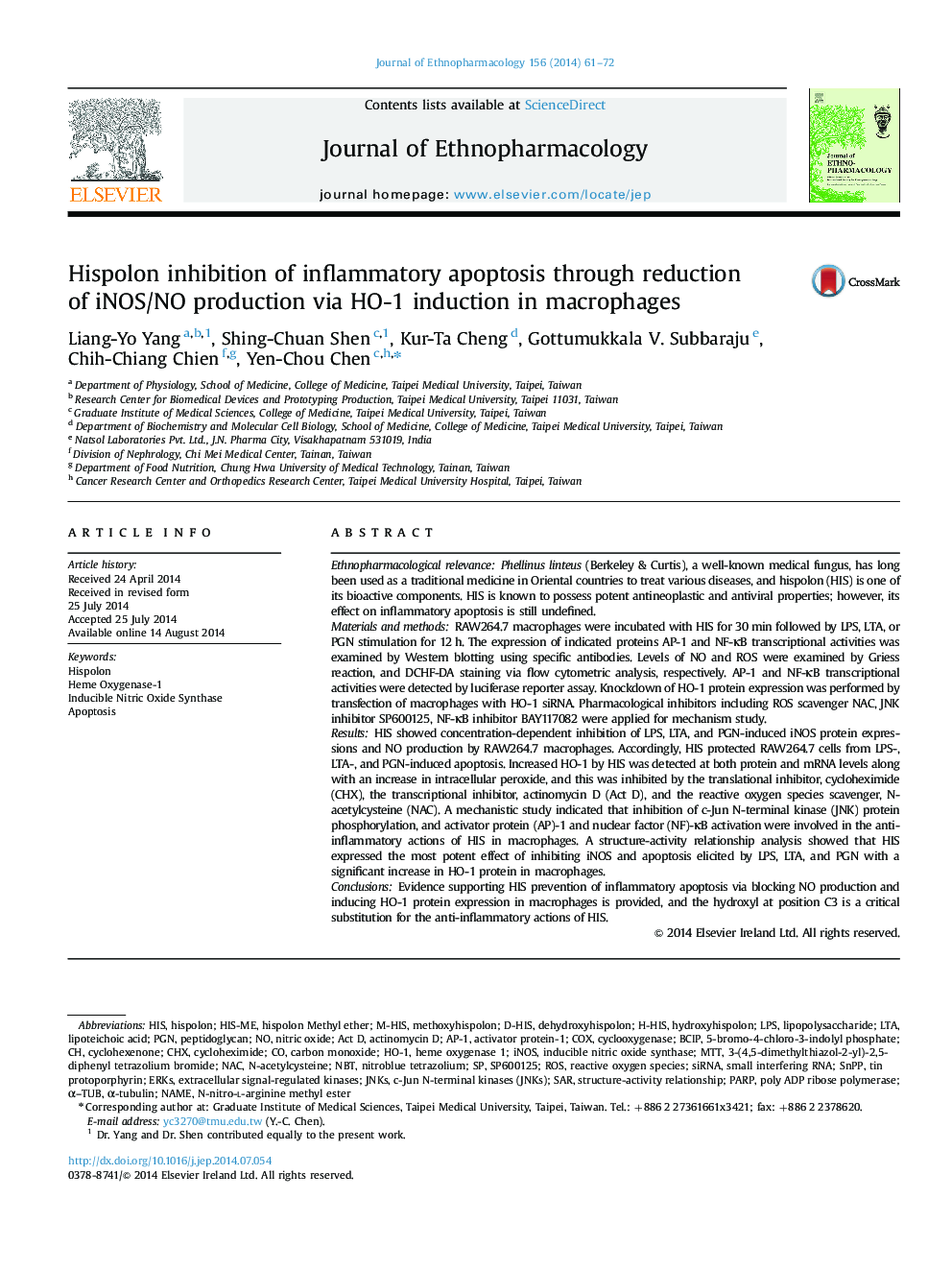| کد مقاله | کد نشریه | سال انتشار | مقاله انگلیسی | نسخه تمام متن |
|---|---|---|---|---|
| 2545242 | 1560405 | 2014 | 12 صفحه PDF | دانلود رایگان |

Ethnopharmacological relevancePhellinus linteus (Berkeley & Curtis), a well-known medical fungus, has long been used as a traditional medicine in Oriental countries to treat various diseases, and hispolon (HIS) is one of its bioactive components. HIS is known to possess potent antineoplastic and antiviral properties; however, its effect on inflammatory apoptosis is still undefined.Materials and methodsRAW264.7 macrophages were incubated with HIS for 30 min followed by LPS, LTA, or PGN stimulation for 12 h. The expression of indicated proteins AP-1 and NF-κB transcriptional activities was examined by Western blotting using specific antibodies. Levels of NO and ROS were examined by Griess reaction, and DCHF-DA staining via flow cytometric analysis, respectively. AP-1 and NF-κB transcriptional activities were detected by luciferase reporter assay. Knockdown of HO-1 protein expression was performed by transfection of macrophages with HO-1 siRNA. Pharmacological inhibitors including ROS scavenger NAC, JNK inhibitor SP600125, NF-κB inhibitor BAY117082 were applied for mechanism study.ResultsHIS showed concentration-dependent inhibition of LPS, LTA, and PGN-induced iNOS protein expressions and NO production by RAW264.7 macrophages. Accordingly, HIS protected RAW264.7 cells from LPS-, LTA-, and PGN-induced apoptosis. Increased HO-1 by HIS was detected at both protein and mRNA levels along with an increase in intracellular peroxide, and this was inhibited by the translational inhibitor, cycloheximide (CHX), the transcriptional inhibitor, actinomycin D (Act D), and the reactive oxygen species scavenger, N-acetylcysteine (NAC). A mechanistic study indicated that inhibition of c-Jun N-terminal kinase (JNK) protein phosphorylation, and activator protein (AP)-1 and nuclear factor (NF)-κB activation were involved in the anti-inflammatory actions of HIS in macrophages. A structure-activity relationship analysis showed that HIS expressed the most potent effect of inhibiting iNOS and apoptosis elicited by LPS, LTA, and PGN with a significant increase in HO-1 protein in macrophages.ConclusionsEvidence supporting HIS prevention of inflammatory apoptosis via blocking NO production and inducing HO-1 protein expression in macrophages is provided, and the hydroxyl at position C3 is a critical substitution for the anti-inflammatory actions of HIS.
A tentative mechanism about HO-1 induced by HIS to prevent LPS, LTA, and PGN-induced inflmmatory apoptosis via blocking iNOS/NO production in macrophages is proposed herein.Figure optionsDownload high-quality image (79 K)Download as PowerPoint slide
Journal: Journal of Ethnopharmacology - Volume 156, 28 October 2014, Pages 61–72